Evolution of Chinese Dragon
The Loong (龙,the name of Chinese dragons) can be regarded as the national totem of China. The Chinese usually call themselves the descendants of Loong. The symbol of dragons has become an important part of Chinese culture, which penetrates deep into the soil of Chinese cultural heritage.
Experts thought there were roughly two origins of the dragons. One was from the crocodile and the other was from the snake. Now most people believe that the dragon is a totem complex with the snake as the main body. It has the body of a snake, the head of a pig, the horns of a deer, the ears of an ox, the beard of a sheep, the claws of an eagle, and the scales of a fish. Therefore, Chinese Loong is actually a type of legendary animals combining the features of various animals. But originally it did not always look like the appearance what we can see today. There was a slow process of evolution in the past 6000 years.
In the primitive society, one tribe of the Chinese ancestors living in the Yellow River Basin made snakes as their totem, who finally defeated and unified other clans. They gradually absorbed some features of totems from other clans to form a new upgraded Loong totem. In 1987, a 6000-year-old tomb was excavated in Puyang of Henan Province. A dragon ornament made of clam shells was found next to the skeleton of the male tomb owner. This is the earliest dragon discovered so far (on the left of the pictures below).
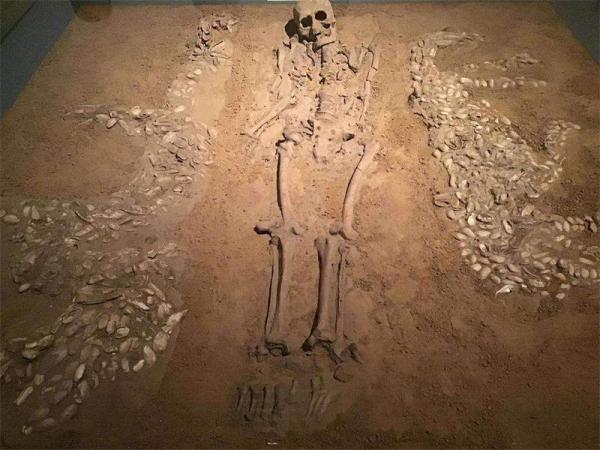
During the dynasties of Xia, Shang and Zhou, it was a crucial period for fast development of the image of Chinese Loong. The "parts" of the legendary animal in this period were basically complete, including scales, eyes, horns, etc.
During the Shang Dynasty, most dragons were carved out of the jade in the shape of semicircle, circle with an opening or circle, and there were also round carved dragons.
1. Most of the eyes were carved in a shape of the character of "臣", and there were also diamond-shaped eyes and round eyes.
2. Their mouths are slightly open, and those round carved dragons have their teeth exposed.
3. Two mushroom-shaped horns are placed on the neck, and jagged dorsal fin on the back.
4. The body is fully decorated with cloud-lighting, square diamond or multi circular patterns.
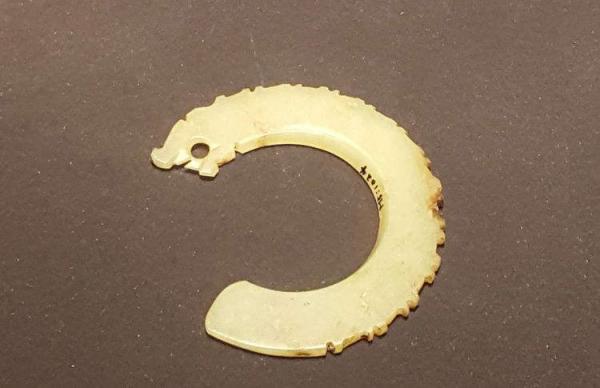
In the Western Zhou Dynasty, there are mainly three types of dragon patterns decorated on jade wares and ornaments of various shapes. The patterns include single dragons, more commonly seen double dragons, dragons with phoenixes or creatures of half dragon and half man. The characteristics of Loong during the period are as below:
1. Most of the eyes are in the shape of character "臣", and there are also oval shaped eyes and square-with-rounded-corners eyes.
2. The Loong’s upper lip is rolled up, and its long tongue stretching out from the mouth is rolled down. A small pointed tip like a curly bracket protrudes from the forehead, and there is a tuft of flying mane behind it, which can also be considered as a horn or an ear.
3. Wide application of the "one-sided slope" knife skill, also known as the oblique knife method. It has one of the two walls of the groove being steep and the other a gentle slope. Due to the different reflections of light on the bottom, slope and plane of the "one-sided slope" groove, the brightness of each of them is different, thus highlighting a strong three-dimensional effect.
4. The jade dragons basically adopted sheet-like carving, and a dragon of carving in the round has not yet been found.
In the Spring and Autumn Period and the Warring States Period, the shape of dragons began to be refined, and the whole body had formed an elastic S-shape, full of vitality. In this period, the dragon was often matched with the bird, so that the footed dragon grew wings again. Being able to fly freely in the sky, it also adds beauty to the Chinese dragon. In Changsha of Hunan Province, the silk painting of "Dragon, Phoenix and Figure" unearthed from the tomb of Chu state shows that a pair of dragon and bird was leading the tomb owner to ascend to the heaven.
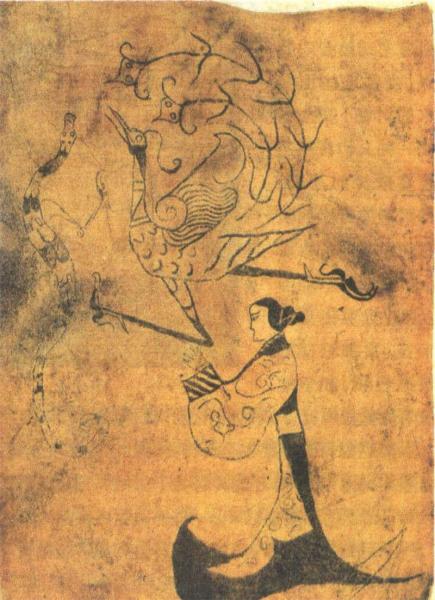
The artistic level of the Chinese dragon entered its prime time during the Han and Jin Dynasties. The long of Han Dynasty has developed a spirit full of dynamic and lively vitality, based on those of the Warring States. Its form is either climbing or descending. This is especially reflected on the portrait bricks and stone in the excavated tombs of the Han Dynasties. The dragons of Wei and Jin Dynasties have reached a unity of form and spirit, with a lofty and unyielding character. They no longer gallop in the sky like the Han dragons, but stretch their tails and the body flat without rolling them, appearing stable and elegant.
The Long of Tang Dynasty was endowed with gracefulness and dignity in a chubby appearance. This is closely related to the economic development and cultural preference of the Tang Dynasty. During the period, new ideas toward Chinese dragons appeared. They were honored with more capabilities, other than simply flying in the sky. The new fellow dragons can dive into the water of river and sea. Therefore, the original land-air dragons were turned into water dragons. In the Asian Art Museum of San Francisco, there is a square tower of Xiude Temple in Taihang Mountain from the Tang Emperor Gaozong era. The sculptured relief depicts a black dragon agitating water. This has been regarded as the earliest water dragon up to now. Later, the portraits of the dragon and fish have flourished. According to archeological discoveries in 1983, a gold cup of Tang Dynasty has a pair of dragon and fish playing with a pearl, which is a rarely seen model during the previous dynasties. Another characteristic of Tang dragons is its standing dragon with the tail coiled around its hind legs. The type of design can be easily found on bronze mirrors or gold and silverware of the Tang Dynasty.
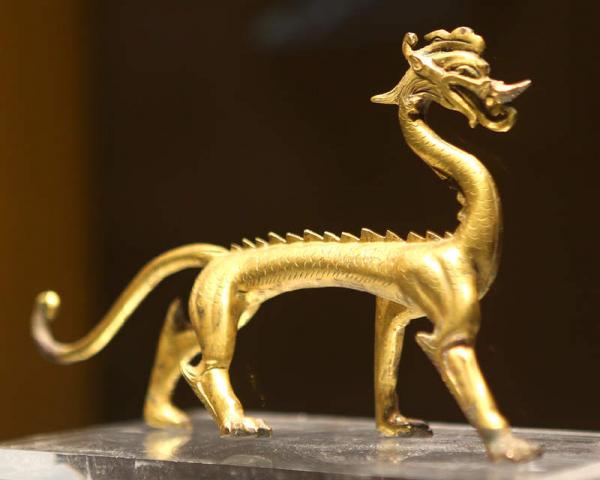
Chinese dragon in Song Dynasty and Yuan Dynasty is imposing, majestic and elegant. It is a continuation of Tang Loong, with a sense of deity. The dragon claws turned from animal paws to eagle talons, usually there were 3 claws on each foot of these dragons during Song and Yuan period. Most of Yuan dragons were narrow necked with plump bodies. They looked angry with all the hairs erecting on head. Their claws have been extended longer like sickles.
By the Ming and Qing dynasties, dragons had a variety of shapes and forms, stretching much longer than those in the previous dynasties. Unfortunately, they were not as lively as in the previous dynasties. Many of them were mainly reflected on porcelains, New Year pictures and wood-panel paintings. The Qing dragons have more rough hairs on head, leaning to neck; they have full of beards on the lower jaw with 4 or 5 claws on each foot.
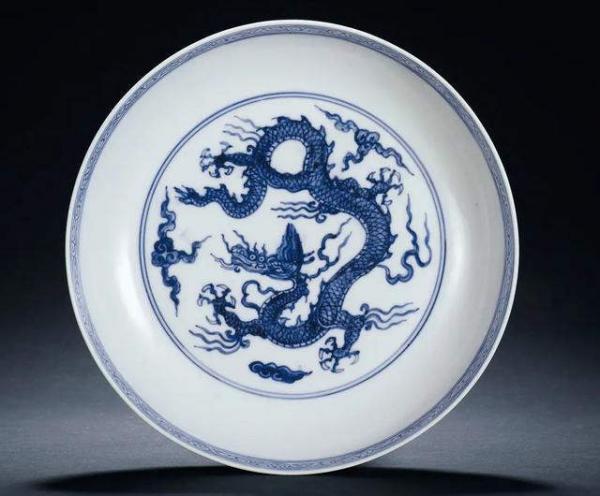
Chinese loong has experienced thousands of years of evolution in China. In history, no matter how the dynasties changed, the inheritance and development of the dragon culture has always remained the same. "Long" has turned into a super cultural icon of the country, together with the Great Wall and giant pandas.
Keep reading: